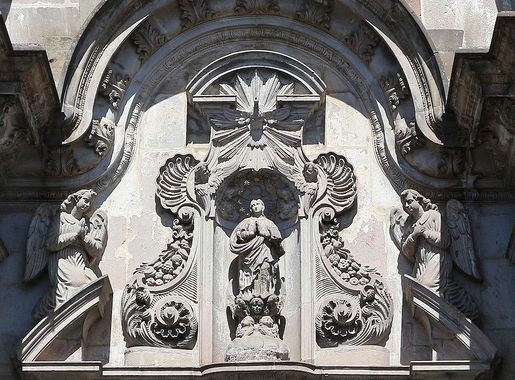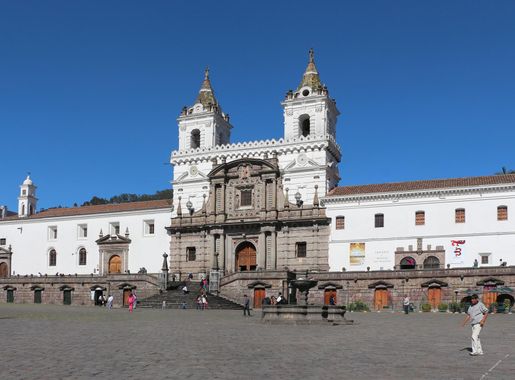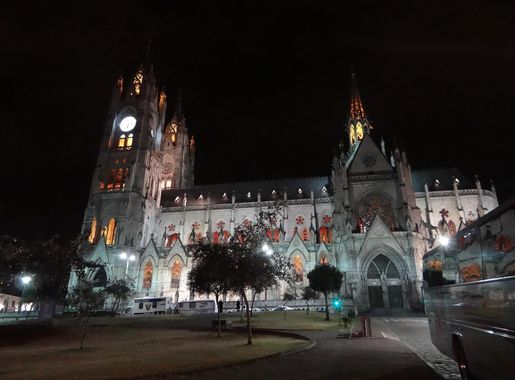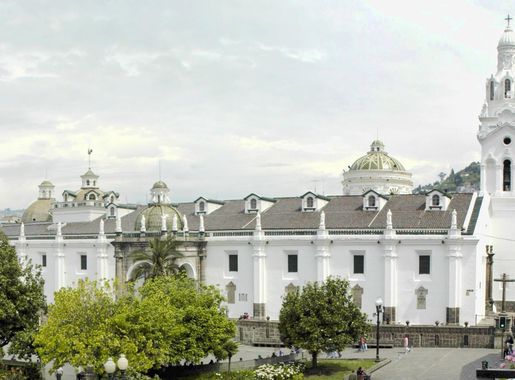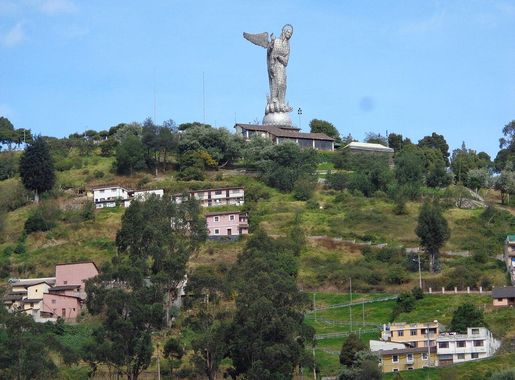
The Timeless Charm of Centro Historico, Quito
Discover the timeless charm of Centro Historico in Quito, a UNESCO World Heritage site rich in colonial architecture, vibrant plazas, and cultural treasures.
Centro Historico in Quito, Ecuador, is a captivating blend of history, culture, and architectural splendor. This UNESCO World Heritage site is one of the best-preserved historic centers in Latin America, offering a journey back in time through its cobblestone streets, colonial churches, and grand plazas. The neighborhood is a living museum, showcasing the rich heritage of Ecuador from the Spanish colonial era to the independence movement. Walking through Centro Historico, visitors can marvel at iconic landmarks such as La Compañía de Jesús, a baroque masterpiece adorned with gold leaf, and the Basilica del Voto Nacional, known for its neo-Gothic architecture and stunning city views. The Plaza Grande, the heart of the historic center, is a vibrant hub where locals and tourists alike gather to enjoy the historic ambiance and nearby attractions like the Presidential Palace and the Cathedral of Quito. The neighborhood is also a cultural hotspot, with numerous museums, galleries, and theaters. The Museo de la Ciudad and Museo Alberto Mena Caamaño offer deep insights into Quito's past. For a taste of local life, visitors can explore the bustling markets, savor traditional Ecuadorian cuisine, and experience the lively street performances that frequently take place. Centro Historico is not just a destination; it's an immersive experience that captures the essence of Quito's rich history and vibrant culture.
Local tips in Centro Historico
- Wear comfortable walking shoes; the cobblestone streets can be uneven.
- Visit early in the morning to avoid crowds and enjoy cooler temperatures.
- Don't miss the panoramic views from the towers of the Basilica del Voto Nacional.
- Try local delicacies at the traditional markets, such as empanadas and helados de paila.
- Be mindful of pickpockets, especially in crowded areas. Keep your belongings secure.
- Take a guided tour to learn more about the historical and cultural significance of the sites.
The Timeless Charm of Centro Historico, Quito
Centro Historico in Quito, Ecuador, is a captivating blend of history, culture, and architectural splendor. This UNESCO World Heritage site is one of the best-preserved historic centers in Latin America, offering a journey back in time through its cobblestone streets, colonial churches, and grand plazas. The neighborhood is a living museum, showcasing the rich heritage of Ecuador from the Spanish colonial era to the independence movement. Walking through Centro Historico, visitors can marvel at iconic landmarks such as La Compañía de Jesús, a baroque masterpiece adorned with gold leaf, and the Basilica del Voto Nacional, known for its neo-Gothic architecture and stunning city views. The Plaza Grande, the heart of the historic center, is a vibrant hub where locals and tourists alike gather to enjoy the historic ambiance and nearby attractions like the Presidential Palace and the Cathedral of Quito. The neighborhood is also a cultural hotspot, with numerous museums, galleries, and theaters. The Museo de la Ciudad and Museo Alberto Mena Caamaño offer deep insights into Quito's past. For a taste of local life, visitors can explore the bustling markets, savor traditional Ecuadorian cuisine, and experience the lively street performances that frequently take place. Centro Historico is not just a destination; it's an immersive experience that captures the essence of Quito's rich history and vibrant culture.
Iconic landmarks you can’t miss
Independence Square
Discover the historic Independence Square, a cultural gem at the heart of Quito, Ecuador, surrounded by stunning architecture and rich heritage.
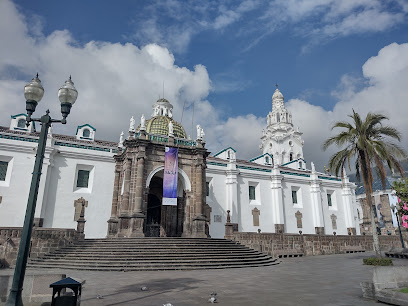
San Francisco Square
Discover the vibrant heart of Quito at San Francisco Square, a historical landmark rich in culture, architecture, and local life.
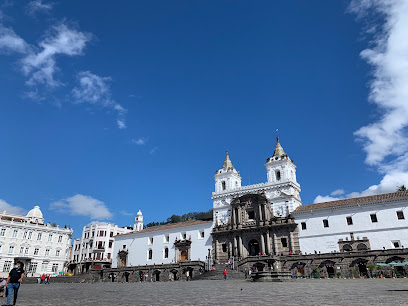
Calle La Ronda
Explore Calle La Ronda - a vibrant street in Quito rich in culture, history, and delicious Ecuadorian cuisine, perfect for every traveler.

Catedral Metropolitana de Quito
Explore the architectural grandeur and historical significance of the Catedral Metropolitana de Quito, a must-see landmark in Ecuador's capital.

Quito Historic Center
Discover the architectural wonders and vibrant culture of Quito's Historic Center, a UNESCO World Heritage site filled with history and charm.
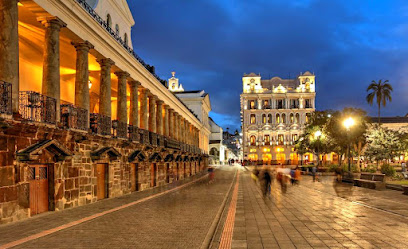
La Guaragua
Explore the rich history and vibrant culture of Quito at La Guaragua, a breathtaking historical site in the heart of Ecuador's capital.
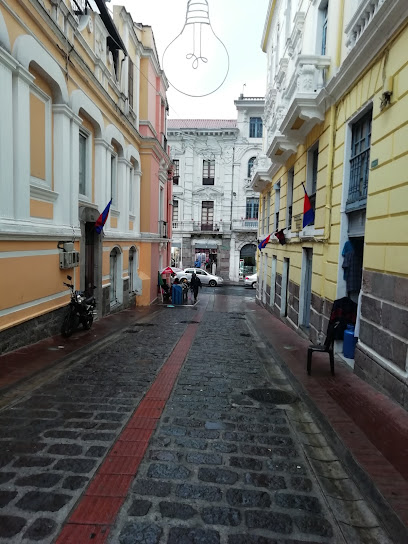
Garcia Moreno
Explore the historical richness and vibrant culture of Garcia Moreno in Quito, Ecuador, where every corner tells a story.
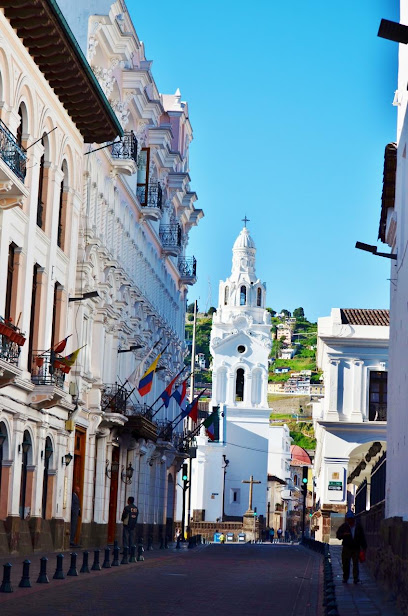
Palacio Arzobispal
Explore the architectural beauty and historical significance of Palacio Arzobispal, a key landmark in Quito's Historic Center.
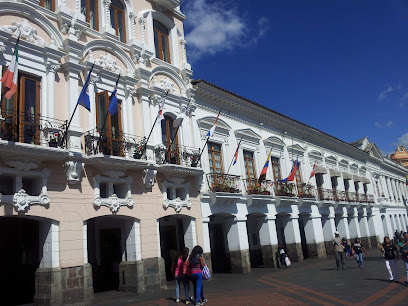
Monumento a la Independencia
Discover the Monumento a la Independencia in Quito, a stunning tribute to Ecuador's fight for freedom and a cultural landmark in the historic city center.
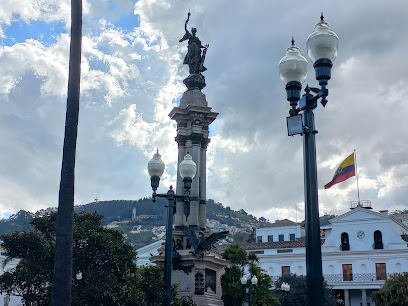
Arco De Santo Domingo
Discover the Arco De Santo Domingo, an iconic historical landmark in Quito, showcasing colonial architecture and vibrant local culture.
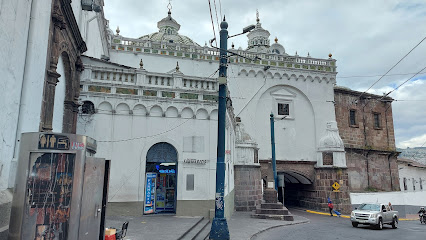
Unmissable attractions to see
San Francisco Square
Discover the vibrant heart of Quito at San Francisco Square, where rich history meets lively culture and breathtaking architecture.
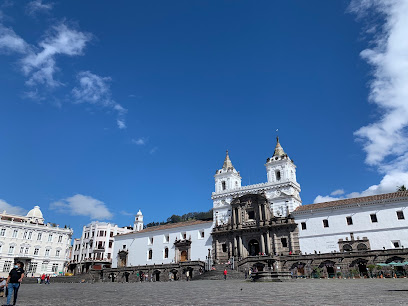
Yaku Water Museum
Explore the Yaku Water Museum in Quito - a unique cultural experience that highlights the significance of water in Ecuadorian life and nature.
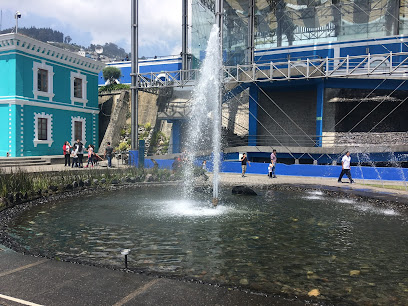
Museum of the City
Discover the captivating history and cultural heritage of Quito at the Museum of the City, a must-visit attraction for all travelers.

Catedral Metropolitana de Quito
Discover the stunning beauty and rich history of the Catedral Metropolitana de Quito, an architectural gem in Ecuador's capital.

Centro Cultural Metropolitano
Discover the vibrant cultural heritage of Quito at the Centro Cultural Metropolitano, a must-visit destination for art and history enthusiasts.

Casa del Alabado Pre-Columbian Art Museum
Explore the Casa del Alabado, a cultural gem in Quito showcasing the richness of Ecuador's pre-Columbian art and heritage.
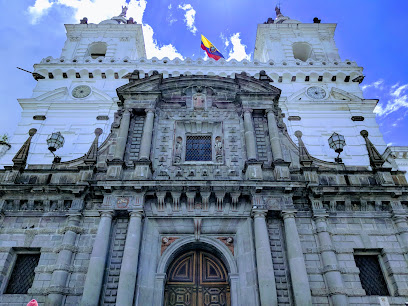
Essential places to dine
Vista Hermosa (Centro Histórico)
Experience authentic Ecuadorian cuisine with stunning views at Vista Hermosa in Quito's historic center.
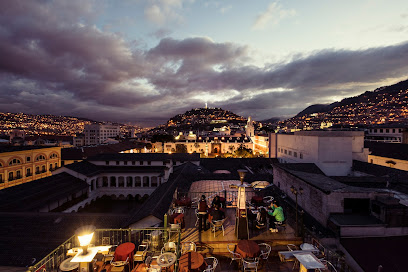
Hasta La Vuelta Señor
Discover authentic Ecuadorian flavors at Hasta La Vuelta Señor in Quito – a vibrant dining experience awaits you.
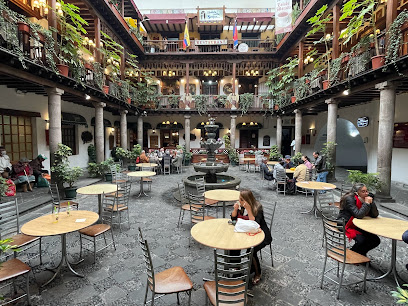
San Ignacio
Discover authentic Ecuadorian flavors at San Ignacio, a delightful breakfast restaurant nestled in Quito's historic center.
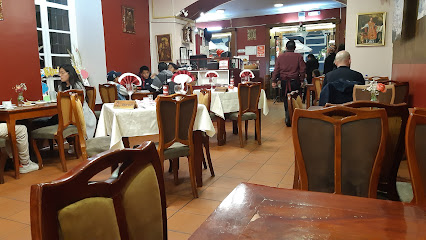
La Vid Restaurante
Experience the essence of Ecuadorian gastronomy at La Vid Restaurante in Quito's historic center.
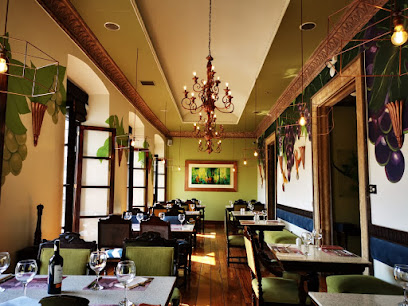
La Caponata
Experience authentic Sicilian cuisine at La Caponata in Quito's historic center - where every dish tells a story.
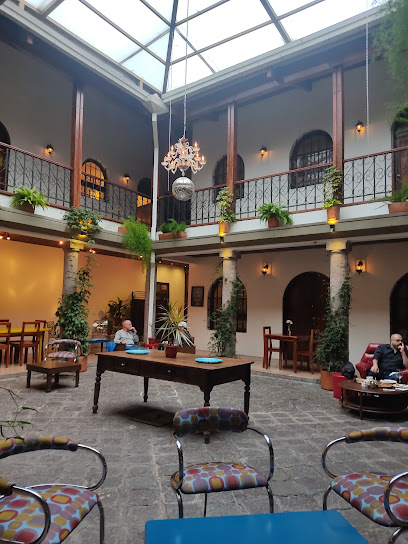
Govinda Gopal Restaurante Vegetariano
Discover the rich flavors of vegetarian cuisine at Govinda Gopal Restaurante Vegetariano in Quito's historic center.
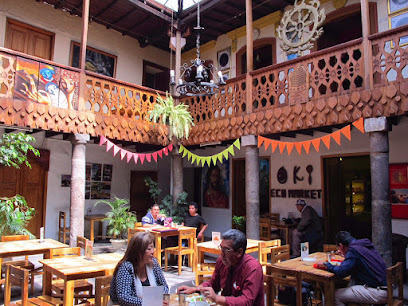
La Capilla Restaurant
Discover authentic Ecuadorian cuisine at La Capilla Restaurant in Quito's historic center - where every dish tells a story.
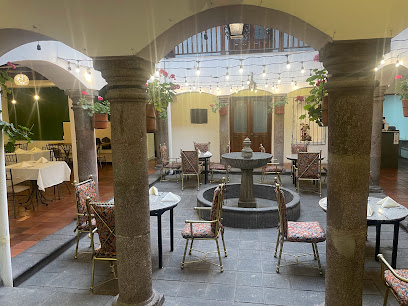
La Negra Mala
Discover the heart of Ecuadorian flavors at La Negra Mala in Quito's historic center—an unforgettable culinary journey awaits.
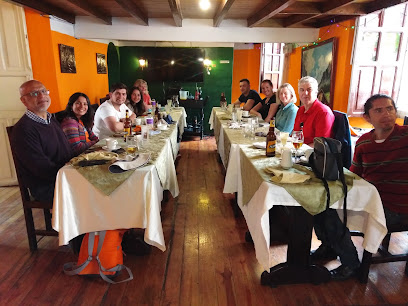
Claroscuro Gastro Bar
Experience Ecuadorian flavors reimagined at Claroscuro Gastro Bar in Quito's historic center, where culinary artistry meets local tradition.
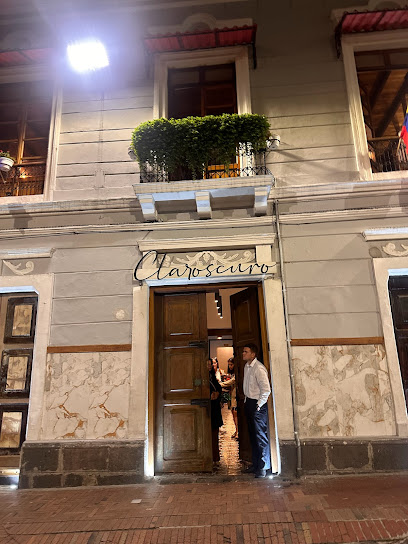
Nuestro Legado
Experience authentic Ecuadorian cuisine at Nuestro Legado in Quito's historic center; where tradition meets taste in every delightful dish.
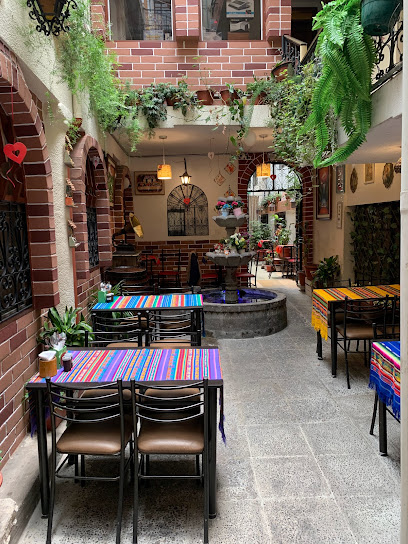
Markets, malls and hidden boutiques
Souvenirs Ecuador
Explore Souvenirs Ecuador in Quito for authentic handcrafted items that encapsulate the rich culture and heritage of Ecuador.
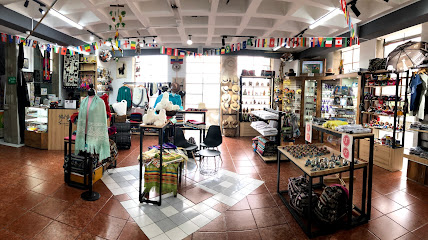
Ecuador Shops
Discover unique Ecuadorian crafts, from textiles to jewelry, at Ecuador Shops in Quito – a must-visit for authentic souvenirs.
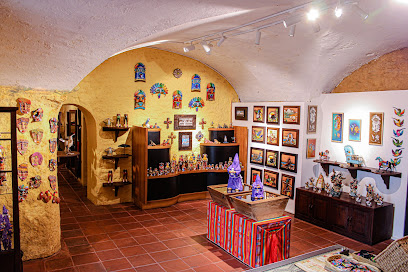
Lokuras D' Boutique
Explore the vibrant essence of Ecuadorian fashion at Lokuras D' Boutique in Quito's historic center, offering unique styles for every traveler.

Cira Boutique
Discover stylish clothing and accessories at Cira Boutique in Quito, where local fashion meets modern trends in a chic shopping experience.

Alta Tendencia Boutique
Explore the heart of Quito's fashion scene at Alta Tendencia Boutique, where local craftsmanship meets contemporary style in a chic setting.
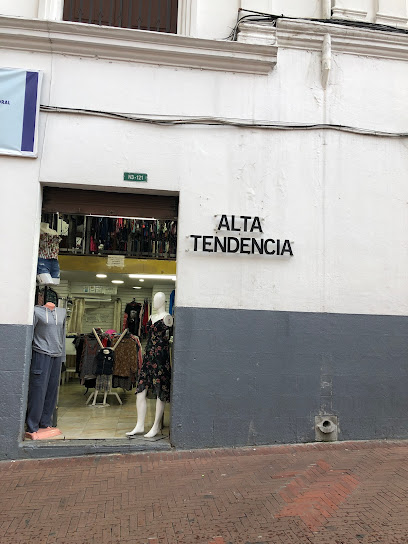
MAAZ STORE
Discover unique women's fashion inspired by Ecuadorian culture at MAAZ STORE in the heart of Quito's historic center.

Novedades Brithney
Discover Novedades Brithney in Quito: Your go-to destination for unique gifts and stylish shoes that showcase Ecuadorian craftsmanship.

Tienda De Recuerdos Local 27
Explore authentic Ecuadorian crafts at Tienda De Recuerdos Local 27, your go-to souvenir store in the heart of Quito's historic district.

Fancy Shop
Discover the elegance of Quito at Fancy Shop, where modern style meets local craftsmanship in women's fashion.

Urban Store
Explore the delightful Urban Store in Quito, a toy wonderland filled with imaginative games and timeless treasures for all ages.

Essential bars & hidden hideouts
Finn McCool's Irish Pub
Discover the heart of Irish culture at Finn McCool's, a lively pub in Quito offering brunch, drinks, and unforgettable nightlife experiences.
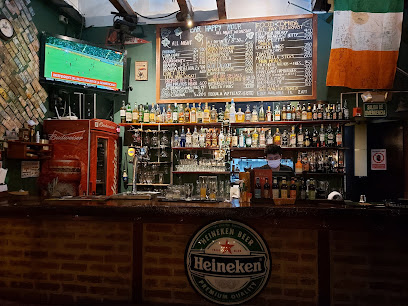
Sinners Microcerveceria - Centro Historico
Discover the vibrant craft beer scene at Sinners Microcerveceria in Quito's historic center, blending great brews with local flavors.
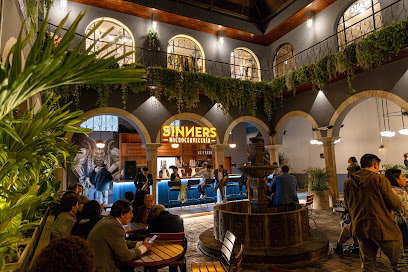
Andes Brew Pub - Plaza del Teatro
Discover the flavors of Ecuador at Andes Brew Pub, where local craft beers and delicious food create an unforgettable experience in the heart of Quito.
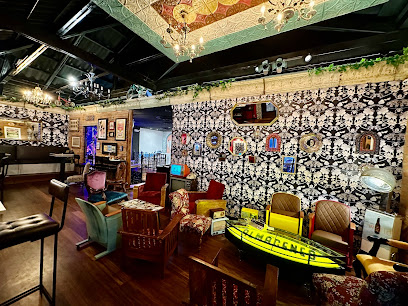
Whiskey A Go Go
Experience the vibrant nightlife of Quito at Whiskey A Go Go, where delicious food and great drinks meet lively entertainment.
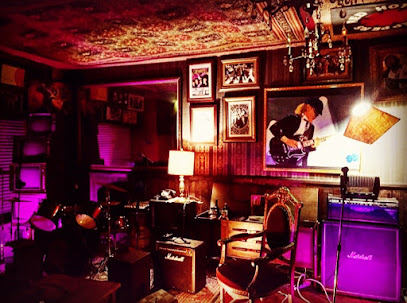
MOR-Ō Resto-Pub
Discover the flavors of Quito at MOR-Ō Resto-Pub, a cozy gastropub offering gourmet burgers and craft beers just steps from the Basilica.
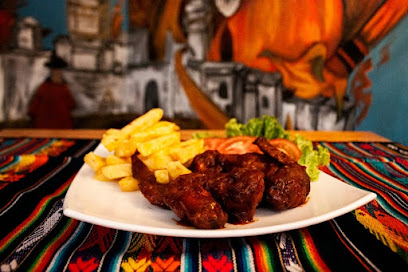
Zona Seven
Experience the culinary delight at Zona Seven, a grill restaurant in Quito, where tradition meets flavor in every bite.

LICORERIA EL AMANECER
Discover Quito's vibrant nightlife at Licoreria El Amanecer, a lively bar offering an array of local drinks and authentic cultural experiences.

Imbabura
Discover Imbabura, a cozy bar in Quito's Centro Histórico, where local flavors meet a warm atmosphere for a perfect evening out.
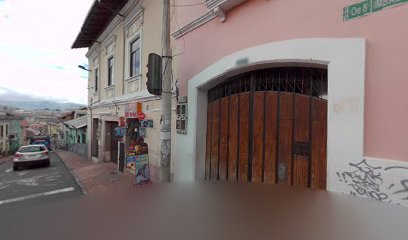
Xenial
Discover the essence of Ecuadorian cuisine at Xenial, a grill restaurant in Quito offering delicious dishes in a warm and inviting atmosphere.
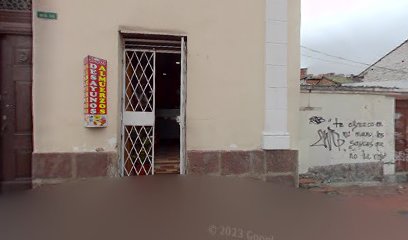
EDISON BAQUERO
Experience the lively atmosphere and diverse drink selection at Edison Baquero, a vibrant bar in the heart of Quito's historic district.
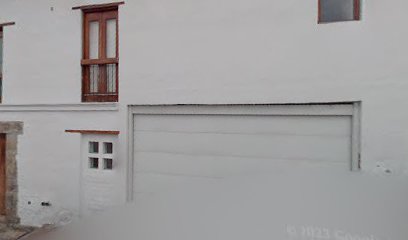
Local Phrases
-
- HelloHola
[oh-lah] - GoodbyeAdiós
[ah-dee-ohs] - YesSí
[see] - NoNo
[noh] - Please/You're welcomePor favor/De nada
[por fah-vor/deh nah-dah] - Thank youGracias
[grah-see-ahs] - Excuse me/SorryDisculpe/Lo siento
[dees-kool-peh/loh see-en-toh] - How are you?¿Cómo estás?
[koh-moh ehs-tahs] - Fine. And you?Bien. ¿Y tú?
[byen. ee too] - Do you speak English?¿Hablas inglés?
[ah-blahs een-glays] - I don't understandNo entiendo
[noh ehn-tyen-doh]
- HelloHola
-
- I'd like to see the menu, pleaseMe gustaría ver el menú, por favor
[meh goos-tah-ree-ah vehr ehl meh-noo, por fah-vor] - I don't eat meatNo como carne
[noh koh-moh kahr-neh] - Cheers!¡Salud!
[sah-lood] - I would like to pay, pleaseMe gustaría pagar, por favor
[meh goos-tah-ree-ah pah-gahr, por fah-vor]
- I'd like to see the menu, pleaseMe gustaría ver el menú, por favor
-
- Help!¡Ayuda!
[ah-yoo-dah] - Go away!¡Vete!
[veh-teh] - Call the Police!¡Llame a la Policía!
[yah-meh ah lah poh-lee-see-ah] - Call a doctor!¡Llame a un médico!
[yah-meh ah oon meh-dee-koh] - I'm lostEstoy perdido
[ehs-toy pehr-dee-doh] - I'm illEstoy enfermo
[ehs-toy ehn-fehr-moh]
- Help!¡Ayuda!
-
- I'd like to buy...Me gustaría comprar...
[meh goos-tah-ree-ah kohm-prahr] - I'm just lookingSolo estoy mirando
[soh-loh ehs-toy mee-rahn-doh] - How much is it?¿Cuánto cuesta?
[kwan-toh kwehs-tah] - That's too expensiveEso es muy caro
[eh-soh es mwee kah-roh] - Can you lower the price?¿Puede bajar el precio?
[pweh-deh bah-har ehl pree-syoh]
- I'd like to buy...Me gustaría comprar...
-
- What time is it?¿Qué hora es?
[keh oh-rah ehs] - It's one o'clockEs la una
[ehs lah oo-nah] - Half past (10)Media (10)
[meh-dee-ah (deez ee-ees)] - MorningMañana
[mah-nyah-nah] - AfternoonTarde
[tahr-deh] - EveningNoche
[noh-cheh] - YesterdayAyer
[ah-yehr] - TodayHoy
[oy] - TomorrowMañana
[mah-nyah-nah] - 1Uno
[oo-noh] - 2Dos
[dohs] - 3Tres
[trehs] - 4Cuatro
[kwah-troh] - 5Cinco
[seen-koh] - 6Seis
[says] - 7Siete
[syeh-teh] - 8Ocho
[oh-choh] - 9Nueve
[nweh-veh] - 10Diez
[dyehs]
- What time is it?¿Qué hora es?
-
- Where's a/the...?¿Dónde está...?
[dohn-deh ehs-tah] - What's the address?¿Cuál es la dirección?
[kwal ehs lah dee-rehk-syohn] - Can you show me (on the map)?¿Puede mostrarme (en el mapa)?
[pweh-deh mohs-trar-meh (ehn ehl mah-pah)] - When's the next (bus)?¿Cuándo es el próximo (autobús)?
[kwan-doh ehs ehl proh-ksee-moh (ow-toh-boos)] - A ticket (to ....)Un boleto (a ....)
[oon boh-leh-toh (ah)]
- Where's a/the...?¿Dónde está...?
History of Centro Historico
-
Quito was founded on December 6, 1534, by Spanish conquistador Sebastián de Benalcázar, who established the city on the ruins of the Inca city of Quitu. Centro Histórico became the political and religious heart of the Spanish colonial empire in the region, showcasing Spanish baroque architecture and the melding of indigenous and European cultures.
-
The 16th and 17th centuries saw the construction of numerous churches and convents, with the most notable being the **Iglesia de San Francisco** and the **Basilica del Voto Nacional**. These structures reflect the Spanish colonial style and the significant influence of the Catholic Church, which played a central role in the cultural and social life of Quito.
-
In the early 19th century, Centro Histórico was a focal point for the independence movement in Ecuador. The events of the **First Cry of Independence** on August 10, 1809, marked the beginning of the struggle against Spanish rule, leading to the establishment of an independent republic in 1830. The Plaza Grande became a gathering place for revolutionary activities.
-
The 20th century brought about a cultural renaissance in Centro Histórico, with the establishment of museums, theaters, and cultural institutions. The **Casa de la Cultura Ecuatoriana** became a hub for the arts, showcasing Ecuadorian literature, music, and visual arts, helping to solidify Quito's status as a cultural center in Latin America.
-
In 1978, Centro Histórico was declared a UNESCO World Heritage Site, recognizing its outstanding universal value and the well-preserved colonial architecture. This designation has led to increased efforts in conservation and restoration, helping to maintain the neighborhood's historical integrity while promoting tourism.
-
In the 21st century, Centro Histórico has undergone significant revitalization efforts, with a focus on restoring public spaces and promoting local culture. Initiatives such as the **Quito Historical Center Project** aim to improve infrastructure and accessibility, while cultural festivals celebrate the rich traditions of the area, enhancing the community's vibrancy.
Centro Historico Essentials
-
Centro Historico is centrally located in Quito and can be easily accessed from other neighborhoods. From La Mariscal, you can take a short taxi ride or use public transport, including the Ecovía bus system, which has a stop at the nearby San Francisco Plaza. If you're coming from the airport, a taxi or ride-sharing service is the most convenient option, taking approximately 45 minutes, depending on traffic.
-
Centro Historico is best explored on foot due to its compact size and pedestrian-friendly streets. However, the Trolebus and Ecovía bus systems provide convenient access to various points within the neighborhood and beyond. Bicycles can be rented from local shops, and some areas offer bike lanes. Taxis and ride-sharing services are also readily available for longer distances.
-
While Centro Historico is generally safe during the day, it's advisable to remain vigilant, especially in less crowded areas at night. High-crime areas include parts of the La Ronda street and areas near the bus stations. Avoid displaying valuable items and be cautious of pickpockets, particularly in crowded tourist spots.
-
In case of emergencies, dial 911 for police, fire, or medical assistance. The local hospitals can provide emergency care, and pharmacies are widely available for minor health issues. Familiarize yourself with the location of the nearest police station and medical facilities upon arrival.
-
Fashion: Do wear comfortable shoes for walking and dress modestly, especially when visiting churches. Don't wear overly flashy jewelry. Religion: Do respect local customs; cover your shoulders and knees in religious sites. Public Transport: Do be courteous to fellow passengers and keep noise levels down. Don't eat or drink on public transport. Greetings: Do greet locals with a friendly smile or handshake. Don't be overly formal; a casual approach is often appreciated. Eating & Drinking: Do try local dishes at street vendors and restaurants. Don't refuse food offered to you; it’s a sign of hospitality.
-
To experience Centro Historico like a local, visit local markets such as the Mercado Central for fresh produce and traditional foods. Engage with street vendors and artisans to learn about their crafts. Join a walking tour to discover hidden gems and historical insights. Don't miss local festivals, as they provide a vibrant glimpse into Quito's culture and traditions.
Nearby Cities to Centro Historico
-
Things To Do in Mindo
-
Things To Do in Otavalo
-
Things To Do in Ibarra
-
Things To Do in Ambato
-
Things To Do in Tena
-
Things To Do in Pasto
-
Things To Do in Macas
-
Things To Do in Manta
-
Things To Do in Guayaquil
-
Things To Do in Cuenca
-
Things To Do in Salinas
-
Things To Do in Popayán
-
Things To Do in Loja
-
Things To Do in Cali
-
Things To Do in Neiva


